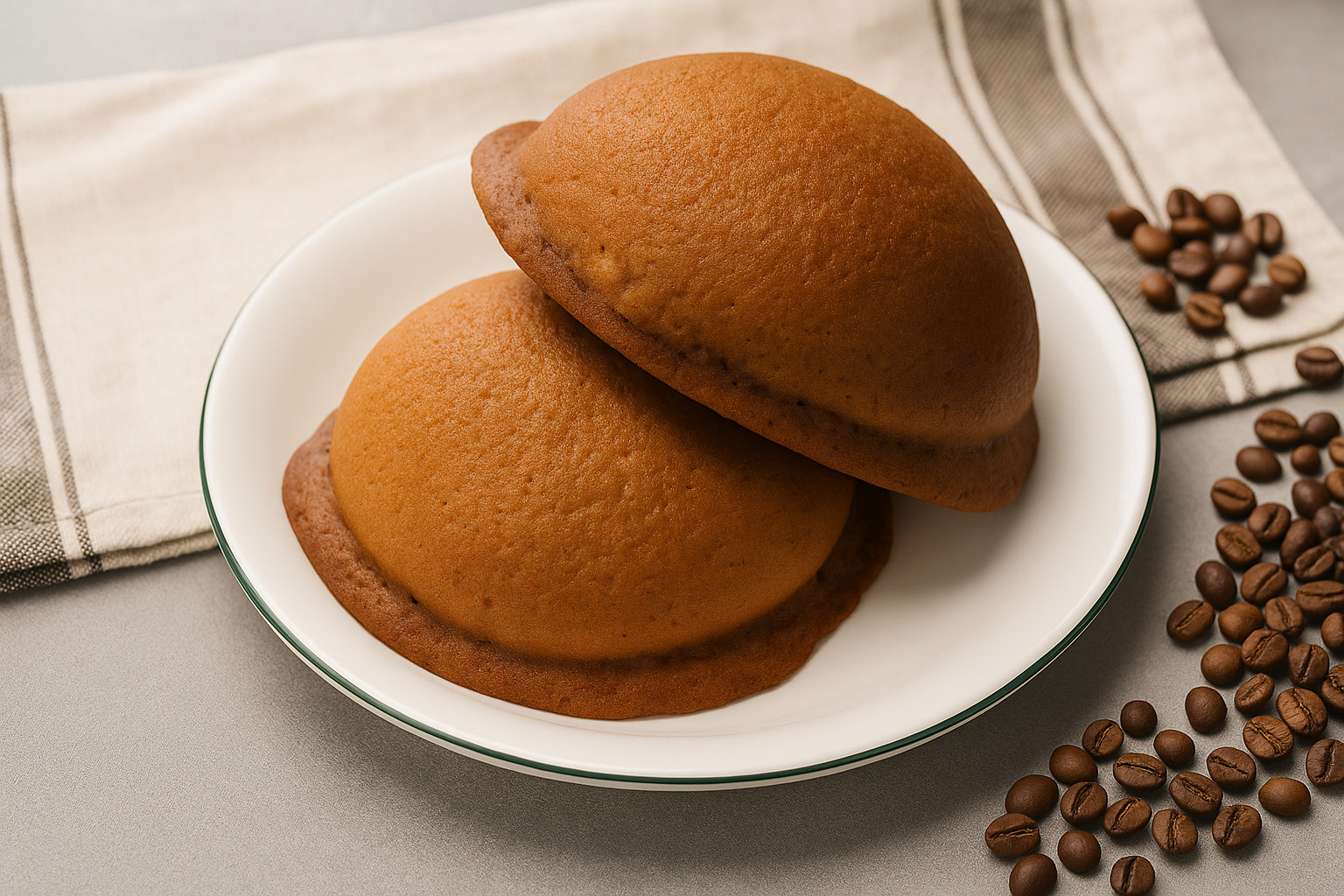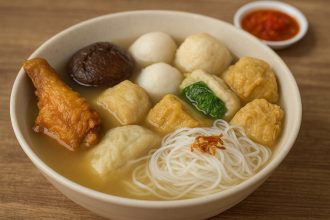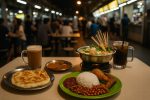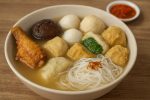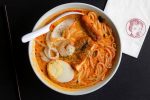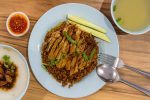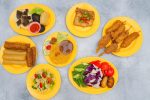A coffee-coated bun isn’t just a sweet roll with caffeine flair. It’s a baked pastry wrapped in a crisp, coffee-infused shell that cracks delicately when bitten, giving way to a soft, buttery interior. The concept gained massive traction through brands like Malaysia’s Rotiboy and Singapore’s Rotimum, each known for popularizing this fragrant, golden dome across Southeast Asia. Here’s what makes it stand out, how it’s made, and why it deserves a place on your plate.
What Is a Coffee-Coated Bun?
A coffee-coated bun, often called a Mexican coffee bun or rotiboy-style bun, consists of three core components:
- A soft milk bread base
Slightly sweet, pillowy, and rich with butter and eggs. - A buttery center
Some versions include a small cube of salted butter inside the dough before baking. - A coffee-flavored crust
The outer shell is a piped layer of coffee-flavored cookie dough that crisps up in the oven.
The result is contrast in textures—crispy shell, fluffy interior, occasional melted butter pocket.
Core Ingredients That Make It Work
Bread Dough:
- Bread flour
- Milk
- Butter
- Sugar
- Yeast
- Eggs
- Salt
Coffee Crust:
- Unsalted butter
- Powdered sugar
- Eggs
- Instant coffee (or espresso powder)
- All-purpose flour
Optional Fillings:
- Salted butter
- Chocolate chunks
- Cream cheese
Each layer serves a function. The dough rises with softness. The crust adds aroma and structure. The filling delivers surprise richness.
Baking Process: From Dough to Crispy Shell
Step 1: Prepare the Dough
Mix yeast with warm milk and sugar to activate. Combine with flour, eggs, and salt. Knead until smooth and elastic. Rest for 60–90 minutes until doubled in size.
Step 2: Shape and Fill
Divide dough into equal balls. Flatten each and place a small cube of cold butter or chocolate inside. Seal and shape into smooth rounds.
Step 3: Pipe the Coffee Crust
Mix softened butter and powdered sugar until fluffy. Beat in eggs and coffee paste. Add flour. Pipe a spiral over the top of each dough ball, leaving room for the crust to spread during baking.
Step 4: Bake
Bake at 180°C (350°F) for 15–18 minutes. The coffee crust spreads into a golden dome, crisping while the bread rises and bakes.
Texture and Flavor Profile
A fresh coffee-coated bun hits several sensory points:
- Aroma: Rich coffee scent wafts from the oven and intensifies during the first bite.
- Texture: Crust shatters gently. Bread stays soft, like a Japanese milk roll.
- Taste: Light bitterness from coffee balances the sweet, buttery dough.
- Mouthfeel: Crunch transitions to fluff, then a warm butter melt or chocolate burst.
Why Coffee-Coated Buns Stand Out
- They deliver contrast in every aspect: hot/cold, crisp/soft, bitter/sweet.
- They don’t need frosting or glaze. The crust IS the topping.
- They store well. Even after a day, a few minutes in the oven refreshes the texture.
- They travel easily, making them ideal for bakeries, cafes, and home kitchens alike.
Variations Worth Trying
• Chocolate Coffee Buns
Swap butter for dark chocolate chunks. The bittersweet combo amplifies the coffee notes.
• Mocha-Crusted Buns
Add cocoa powder to the coffee topping. This softens the bitterness and boosts the chocolate angle.
• Savory Center
Try garlic butter or cheese in the core. The salty edge pairs well with the sweet, coffee-flavored shell.
• Almond-Coffee
Add slivered almonds atop the coffee crust before baking for nutty crunch.
Tips for Getting It Right
- Use instant espresso powder for strong flavor without added moisture.
- Don’t over-proof the dough or the bun might collapse under the crust.
- Pipe crust just before baking. A long rest causes it to sink or harden.
- Always bake on parchment to avoid sticking and catch crust overflow.
- Cool before storing. Trapped steam ruins the crispy top.
Coffee-Coated Buns Around the World
Though often associated with Malaysia’s Rotiboy chain, similar buns have surfaced globally:
- “Papparoti” in the Middle East, often with cardamom or saffron notes.
- “Mexican Buns” in Taiwan and Korea.
- “Coffee Buns” in artisan bakeries across the U.S., sometimes with specialty coffee crusts or gourmet fillings.
Each version sticks to the same formula: bold outer shell, soft inner core, and an aroma that sells itself.
Serving Suggestions
- Breakfast Pairing: Serve with black coffee or a latte. The crust echoes the drink while the bun softens the bitterness.
- Dessert Plating: Warm and serve with a scoop of vanilla ice cream or a drizzle of condensed milk.
- Afternoon Snack: Reheat slightly and pair with strong tea or matcha. The balance keeps it from feeling too rich.
- Party Bites: Make mini versions using the same method. Great as tray-passed treats or brunch basket additions.
Final Thought
Coffee-coated buns continue to gain loyal fans across borders. In Malaysia, Rotiboy popularized the warm, crackly-topped bun with its unmistakable aroma and soft, buttery center. Singapore followed suit with Rotimum, offering a similar experience tailored to local preferences. Both brands helped bring this coffee-kissed treat from bakery shelves to household cravings. Whether paired with tea, coffee, or eaten on its own, the coffee-coated bun delivers consistent satisfaction in every bite.
